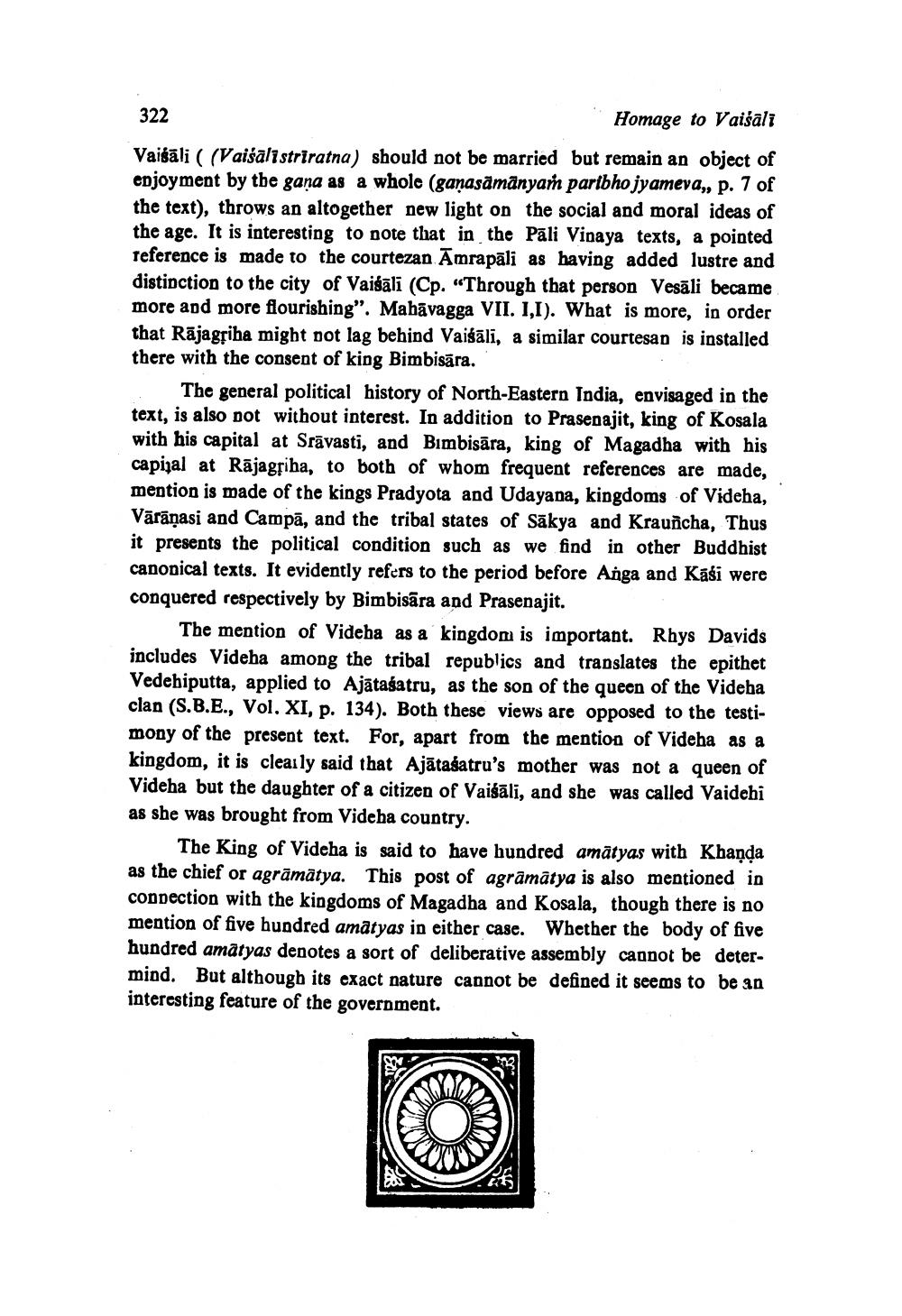________________ 322 Homage to Vaisali Vaigali ( (Vaisali striratna) should not be married but remain an object of enjoyment by the gana as a whole (ganasamanyam paribho jyameva,, p. 7 of the text), throws an altogether new light on the social and moral ideas of the age. It is interesting to note that in the Pali Vinaya texts, a pointed reference is made to the courtezan Amrapali as having added lustre and distinction to the city of Vaigali (Cp. "Through that person Vesali became more and more flourishing". Mahavagga VII. 1,1). What is more, in order that Rajagriha might not lag behind Vaisali, a similar courtesan is installed there with the consent of king Bimbisara. The general political history of North-Eastern India, envisaged in the text, is also not without interest. In addition to Prasenajit, king of Kosala with his capital at Sravasti, and Bimbisara, king of Magadha with his capijal at Rajagpiha, to both of whom frequent references are made, mention is made of the kings Pradyota and Udayana, kingdoms of Videha, Varanasi and Campa, and the tribal states of Sakya and Krauncha, Thus it presents the political condition such as we find in other Buddhist canonical texts. It evidently refers to the period before Anga and Kasi were conquered respectively by Bimbisara and Prasenajit. The mention of Videba as a kingdom is important. Rhys Davids includes Videha among the tribal republics and translates the epithet Vedebiputta, applied to Ajatasatru, as the son of the queen of the Videba clan (S.B.E., Vol. XI, p. 134). Both these views are opposed to the testimony of the present text. For, apart from the mention of Videba as a kingdom, it is clearly said that Ajatasatru's mother was not a queen of Videha but the daughter of a citizen of Vaisali, and she was called Vaidehi as she was brought from Videha country. The King of Videha is said to have hundred amatyas with Khanda as the chief or agramatya. This post of agramatya is also mentioned in connection with the kingdoms of Magadha and Kosala, though there is no mention of five hundred amatyas in either case. Whether the body of five hundred amatyas denotes a sort of deliberative assembly cannot be determind. But although its exact nature cannot be defined it seems to be an interesting feature of the government.




